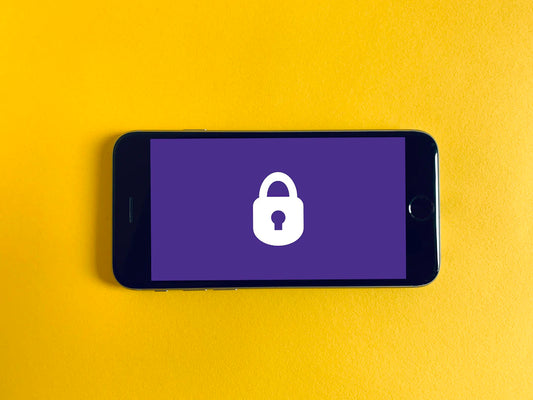Frequently Asked Questions
1. What are privacy phones?
2. Why is privacy important in today's digital world?
3. What is GrapheneOS?
4. What are the benefits of using a privacy phone?
5. How do privacy phones differ from regular smartphones?
In our increasingly connected world, the battle for personal privacy is more crucial than ever. With every click, swipe, and tap, your personal data is collected, analyzed, and often exploited. As a result, many people are beginning to seek alternatives that prioritize user autonomy. This is where privacy phones come into play, offering an innovative solution for those who want to regain control over their digital lives. In this article, we’ll explore how privacy phones empower user autonomy and analyze what sets devices like the Google Pixel 3a running GrapheneOS apart in this growing market.
Understanding Privacy Phones
Before we delve into the specifics, let’s talk about what privacy phones are. Essentially, privacy phones are devices designed to maximize user privacy. This is achieved through various means, including enhanced security features, custom operating systems, and a strong focus on data protection. Unlike standard smartphones, which often come preloaded with numerous applications that track user behavior, privacy phones minimize these risks to provide a more secure user environment.
The Need for Privacy
The need for privacy has become apparent as more and more data breaches occur, and data privacy regulations evolve. Governments, companies, and online platforms collect vast amounts of personal information, often without users’ knowledge or consent. This has led to heightened concerns over identity theft, targeted ads, and data misuse.
Statistics reveal a troubling reality: according to a report by the Identity Theft Resource Center, data breaches have increased significantly in recent years, putting millions of individuals at risk. By choosing a privacy phone, users can take proactive measures to safeguard their personal information, ensuring that their digital presence remains under their control.
The Role of Operating Systems
One of the defining characteristics of privacy phones is the operating system (OS) they run. Many privacy phones use modified versions of popular operating systems that emphasize security and privacy. For example, the Google Pixel 3a is commonly preferred by privacy enthusiasts because it supports custom operating systems like GrapheneOS.
What is GrapheneOS?
GrapheneOS is a security and privacy-focused mobile operating system based on the Android platform. It enhances the privacy attributes of standard Android by implementing multiple innovative features, which leads to a more secure user environment. Some benefits of GrapheneOS include:
- Decreased Attack Surface: GrapheneOS minimizes the number of attack vectors available to potential threats, making it more challenging for hackers to exploit vulnerabilities.
- Sandboxed Applications: This OS features heavy app sandboxing, keeping applications isolated from each other to further protect user data.
- No Tracking: Unlike traditional Android, GrapheneOS does not rely on Google Play Services, significantly reducing the amount of tracking and data collection.
- Frequent Security Updates: Users can receive regular updates, ensuring that their device has the latest security patches, which is key to mitigating threats.
Benefits of Using Privacy Phones
Switching to a privacy phone, especially one that runs with systems like GrapheneOS, presents multiple advantages that empower users. Let’s take a closer look at these benefits:
Enhanced Control Over Personal Data
One of the primary advantages of privacy phones is that users gain heightened control over their personal information. They can choose what data to share and when to share it. Unlike traditional smartphones that often come preloaded with applications and bloatware that collect data without user consent, privacy phones allow users to make informed decisions about app installations.
Reduced Advertising Pressure
Most smartphones today bombard users with advertisements tailored to their online behavior. Privacy phones minimize this effect by limiting data tracked by third parties. With a Google Pixel 3a running GrapheneOS, you can further reduce targeted advertising by using privacy-focused applications and tools.
Because Open Source is the Future
Open-source software, like GrapheneOS, gives transparency to users. Open-source programs allow anyone to inspect the underlying code, ensuring that threats tend to be identified and addressed by a community of developers. This level of transparency not only builds trust but also encourages users to participate in the ongoing dialogue about privacy and security.
Privacy Phones vs. Regular Smartphones
Many users may wonder why they should switch to a privacy phone rather than sticking to their current devices. Here are some clear differentiating factors:
Privacy Features
Regular smartphones often come with built-in tracking software that collects and sells user data to advertisers. Privacy phones eliminate or severely limit these features, ensuring users can interact with technology on their terms.
Voluntary Data Sharing
Privacy phones empower users by making it clear what data is being shared and when. Users can easily opt-out of data collection mechanisms that they perceive as intrusive.
Fewer Marketing Interferences
With a privacy phone, users experience less interference from marketing teams looking to capitalize on user behavior. This leads to a smoother user experience free from disruptive ads.
Real-World Applications of Privacy Phones
You may be asking yourself how this applies to daily life. Here are some real-world scenarios where privacy phones significantly enhance user autonomy:
- Work-From-Home Scenarios: Employees can utilize privacy phones to keep work-related communications secure from prying eyes.
- Awareness Raising: Activists and journalists utilize privacy phones to gather information and communicate without fear of surveillance.
- Social Interactions: Users can enjoy social media and communication apps with the comfort of knowing their data isn’t being exploited.
Overcoming Challenges in Adoption
Despite the benefits of privacy phones, logical barriers sometimes prevent users from making the switch. Below, we highlight some common challenges and how users can overcome them:
Learning Curve
Anyone transitioning from a traditional smartphone may encounter a learning curve when adjusting to a new operating system like GrapheneOS. This can be mitigated through online tutorials and community forums that provide support and guidance.
Perception of Complexity
Many users perceive privacy phones as complicated or difficult to use. However, privacy-focused phones are not inherently harder to navigate. Most come equipped with user-friendly interfaces, ensuring ease of use while maintaining privacy.
Compatibility with Apps
Privacy phones can also run many popular applications while providing enhanced security. However, certain applications may not work. Users can often find suitable alternatives that prioritize security and privacy.
Embrace Your Digital Freedom
Switching to a privacy phone embodies a conscious choice to prioritize user autonomy in your digital life. As the landscape of technology continues to evolve, individuals must adapt to ensure that their data remains theirs. By opting for devices like the Google Pixel 3a running GrapheneOS, you take significant strides toward reclaiming your privacy.
Staying informed and engaged in your digital presence is crucial for maintaining control in a world where data is a valuable currency. Ultimately, the shift towards privacy phones is symbolic of a larger movement towards greater data transparency, equipping users with the tools they need to uphold their autonomy. As you consider your next tech investment, choose a path that puts your needs front and center—your freedom depends on it!







